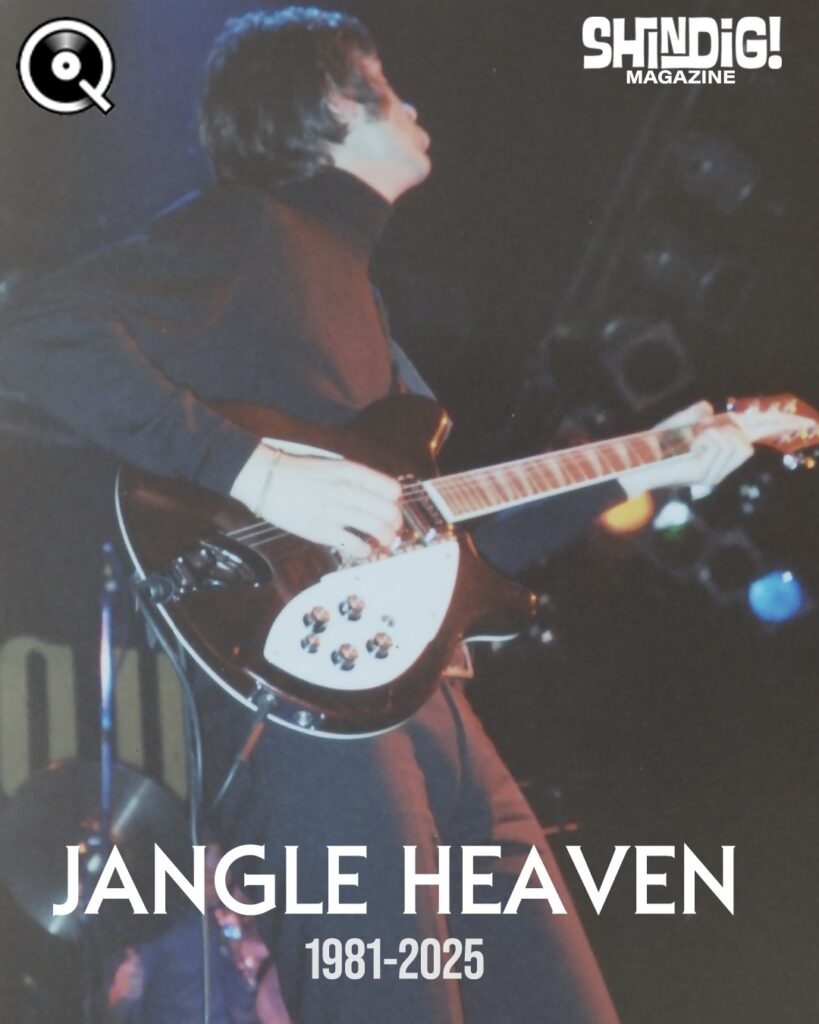Exclusive Shindig! Qobuz playlist #23: Jangle Heaven: 1981-2025
We’re very excited to be media partners with the truly unique online streaming platform and download store Qobuz. This month, the 23rd of our monthly bespoke playlists, which take in all manner of genres and sub-genres, scenes and beyond, then and now, focuses on over 40 years of jangle pop.

Play here or use the scrollable frame with track list below. You can sign up for a free trial today. Plans start from £10.83 per month. For more on Qobuz read our interview with MD Dan Mackta here
Something of a baby sibling to our powerpop playlist, we once again cover a lot of ground in just over three hours. Entitled “Jangle Heaven” this one focuses on the 1981-2025 era. Although just under 40 years is covered, we could have taken this back to The Beatles and Byrds and through Big Star and Flamin’ Grooves into the immediate post-punk era, but we didn’t. A lot of that was featured on our powerpop playlist anyway, so do check that out. If powerpop followed The Beatles’ guitar harmonics through The Who’s power chords, the “jangle sound” really came into its own in the aftermath of punk, springing up on a myriad of indie labels across the world. If The Byrds’ and Beatles’ ringing Rickenbacker guitars and ’60s pop was key, so was the influence of The Velvet Underground, the DIY attack of The Buzzcocks, and what was happening at the time. Notably, the antipodeans were early adopters, with The Church and much of New Zealand’s Dunedin scene (The Chills, The Bats etc). Around the same time key Paisley Underground bands were exploring similar influences in Los Angeles, with the pre Bangles Bangs, Rain Parade, The Three O’Clock and The Long Ryders all displaying a strong taste for janging guitar, whether in the garage, psych or folk-rock idiom. The later era mod revival bands of the early ’80s seemed to take as much notice of the Television Personalities as they did The Jam – and these two influential acts open the comp with the seminal ‘World Of Pauline Lewis’ and a celebratory cover of The Beatles’ ‘And Your Bird Can Sing’. Jangle had never really gone away, featuring strongly in many of the poppier new-wave act of the late ’70s, but after that brief psychedelic revival of the ’80s it took on a new approach – DIY, often amateurish, and honest. It could be said it was a new punk-rock, where spirit, style and honesty mattered more than ability and complexity. For every glossy Lloyd Cole & The Commotions were a Jasmine Minks. The Creation record label was incredibly important in the move to the C86 scene. Alan McGee and Joe Foster loved The Rain Parade, as did many bands in their orbit. Before the great major take over that allowed the label to regularly collapse onto tables laden with cocaine and champagne, when Oasis were the biggest band in the world, the label was a frugal affair born on the back of Alan McGee’s Living Room club night. Singles by Primal Scream, The Loft, and numerous others added some British grit to what the Americans were doing, and a movement thus began. The early “indie-kid” terminology was aimed at the similarly attired youngsters, clamouring for the gangly Bobby Gillespie, the latest Field Mice single, and getting very excited over Sarah Records. In 1989 came The Stone Roses, a band that gained accolades and a massive following. The Roses drank from the cup of those that came before and re-imagined it for a new decade.
By the early ’90s trends came and went – from Baggy and Madchester to Shoegaze and eventually Britpop. Whilst “jangle pop” somewhat went into hiding, key tracks from Ride, The Bluetones, Blow Up and Teenage Fanclub all contained enough ringing guitars and psychedelic touches to fit in here. Even garage acts like The Thanes, The Optic Nerve and The Mystreated and their evident love of The Byrds made their jangly ’60s sound more than acceptable for indie-pop audiences, and again sit in perfectly here.
As the new century dawned LA act The Beachwood Sparks, in their bootcuts and striped tees, were wonderfully post-modern, drawing on the sunshine radiance of The Byrds and equally the Midlands gloom of The Sea Urchins and Felt plus a dash of country-rock. Others followed. Over in blighty, The Coral, the young lads who had entered the fray as Britpop’s embers faded, had matured and their psychedelic flavours came from a similar place to the inspirations on the mid-80s acts. The See See and The Proper Ornaments too were also mining gold. Perhaps the most obvious nod to the initial age of indie-pop featured here is the 2021 outing by San Francisco’s The Umbrellas. ‘She Buys Herself Flowers’ is so reverential and studied, right down to the twee English-sounding female vocals, that it really does sound like a vintage indie recording. And why not? Further bands, usually American and Canadian, have also released records across the last five years that are indebted to the classic jangle-pop period.
Today, in a streaming era that exists without classification, and is often way off with its clarifications, young listeners can join the dots between Simon & Garfunkel and The Stone Roses, and Big Star and Elliott Smith. Algorithm based dumps matter little, what does is the end result, the music. Currently The Lemon Twigs are thrilling audiences across the world with jangly guitars and sweet harmonies. Sharp Pins, who are signed to K Records, are so in awe of the early ’80s sound of The Television Personalities that they record on 4-track, creating a lo-fi amalgam of sweet ’60s pop and post-punk amateurism. It’s perfect in its intended indie-pop imperfections. The Crystal Teardrop’s Alexandra Rose Mason meanwhile is today’s successor to Susanna Hoffs.
When it comes to pop music some things never get old.
Subscribe to Qobuz today to enjoy all of our playlists

